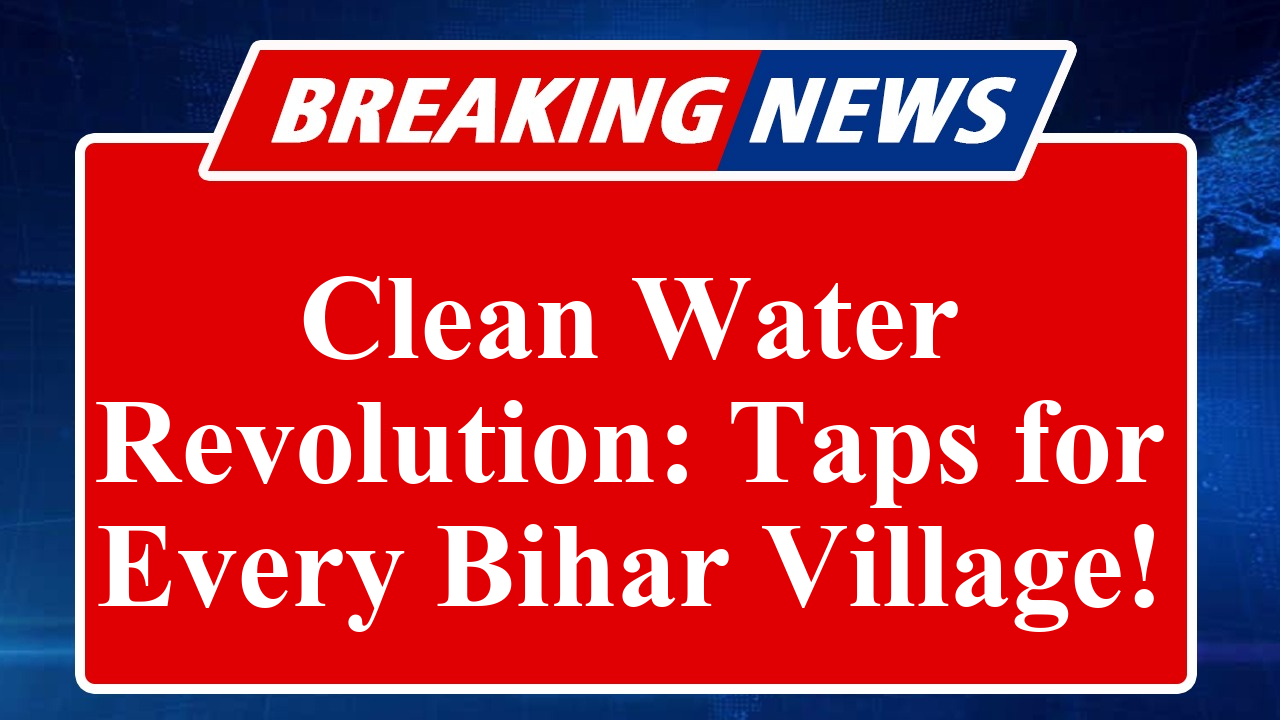“Bihar’s Clean Water Mission, launched under Har Ghar Nal Ka Jal, aims to provide tap water to all 45,000 villages by 2025. Over 1.5 crore rural households now have access, with 4,135 new technical staff to maintain systems. The initiative tackles water scarcity and contamination, improving health and infrastructure, though challenges like verification gaps persist.”
Bihar’s Ambitious Push for Universal Tap Water Access
On June 5, 2025, Bihar’s Public Health Engineering Department (PHED) reaffirmed its commitment to providing safe drinking water to all 45,000 villages in the state by the end of the year, a cornerstone of the Har Ghar Nal Ka Jal scheme under the broader Jal Jeevan Mission (JJM). This ambitious initiative, driven by Chief Minister Nitish Kumar’s vision, has already delivered tap water connections to over 1.5 crore rural households, marking a significant leap toward universal access to clean water.
The state’s progress is notable, with Bihar achieving 96% coverage of rural households under JJM, placing it among India’s top-performing states alongside Punjab and Himachal Pradesh. As of February 2025, approximately 1.35 crore households have functional tap connections, a stark improvement from just 2% in August 2019. The scheme prioritizes potable water supply, adhering to the Bureau of Indian Standards’ IS:10500 for safe drinking water, particularly in areas affected by arsenic, fluoride, and iron contamination.
To sustain this momentum, the state government has announced the recruitment of 4,135 technical and non-technical personnel, including 113 assistant engineers (civil), five assistant engineers (mechanical), and over 3,000 other staff to strengthen the maintenance of piped water systems. These appointments, to be processed through the Bihar Public Service Commission and other state bodies, aim to ensure the longevity and reliability of water infrastructure.
The Har Ghar Nal Ka Jal scheme, a cluster of four state-specific initiatives launched in 2016, complements the central JJM by focusing on both rural and urban households. Each project involves installing two 5,000-litre water tanks on elevated iron platforms (Jal Minars), pumping water from deep borewells, and supplying it through brass taps to households. The state has also restored 7,357 water bodies under the Jal Jeevan Hariyali mission to support groundwater recharge and sustainability.
Despite the progress, challenges remain. A 2023 report by The Hindu highlighted that only 58,357 of the 1,68,000 villages reported as Har Ghar Jal-compliant have been certified, indicating a gap in verification processes. In Bihar, political dynamics have led to limited reliance on central funds, which may affect certification efforts. Additionally, groundwater contamination, particularly arsenic and fluoride in over 2,000 habitations, poses ongoing health risks, necessitating the installation of community water purification plants.
The state’s innovative approach includes a dedicated app for real-time monitoring of water supply systems and mobile water testing vans to ensure quality. Village Water and Sanitation Committees, with at least 50% women members, are empowered to create five-year action plans for water management, fostering community ownership. These efforts align with Bihar’s broader Saat Nishchay 2.0 program, aiming for self-reliance by 2025.
Bihar’s historical water management practices, such as traditional ahars and talabs, are being revived to complement modern infrastructure. However, climate vulnerabilities, including floods in North Bihar and water scarcity in South Bihar, underscore the need for sustainable solutions. The state’s focus on conservation, coupled with rapid infrastructure development, positions it as a model for rural water access, though meeting the 2025 target will require overcoming logistical and environmental hurdles.
Disclaimer: This article is based on recent news, official government reports, and credible sources like the Times of India, The Hindu, and the Jal Jeevan Mission portal. Data reflects information available as of July 6, 2025. Readers are advised to verify details through official channels for the latest updates.

